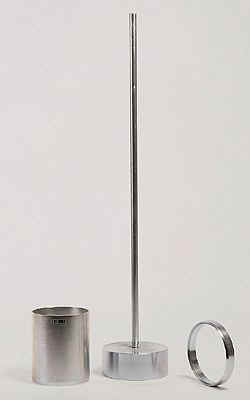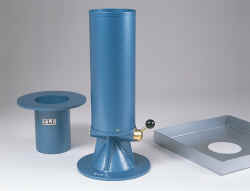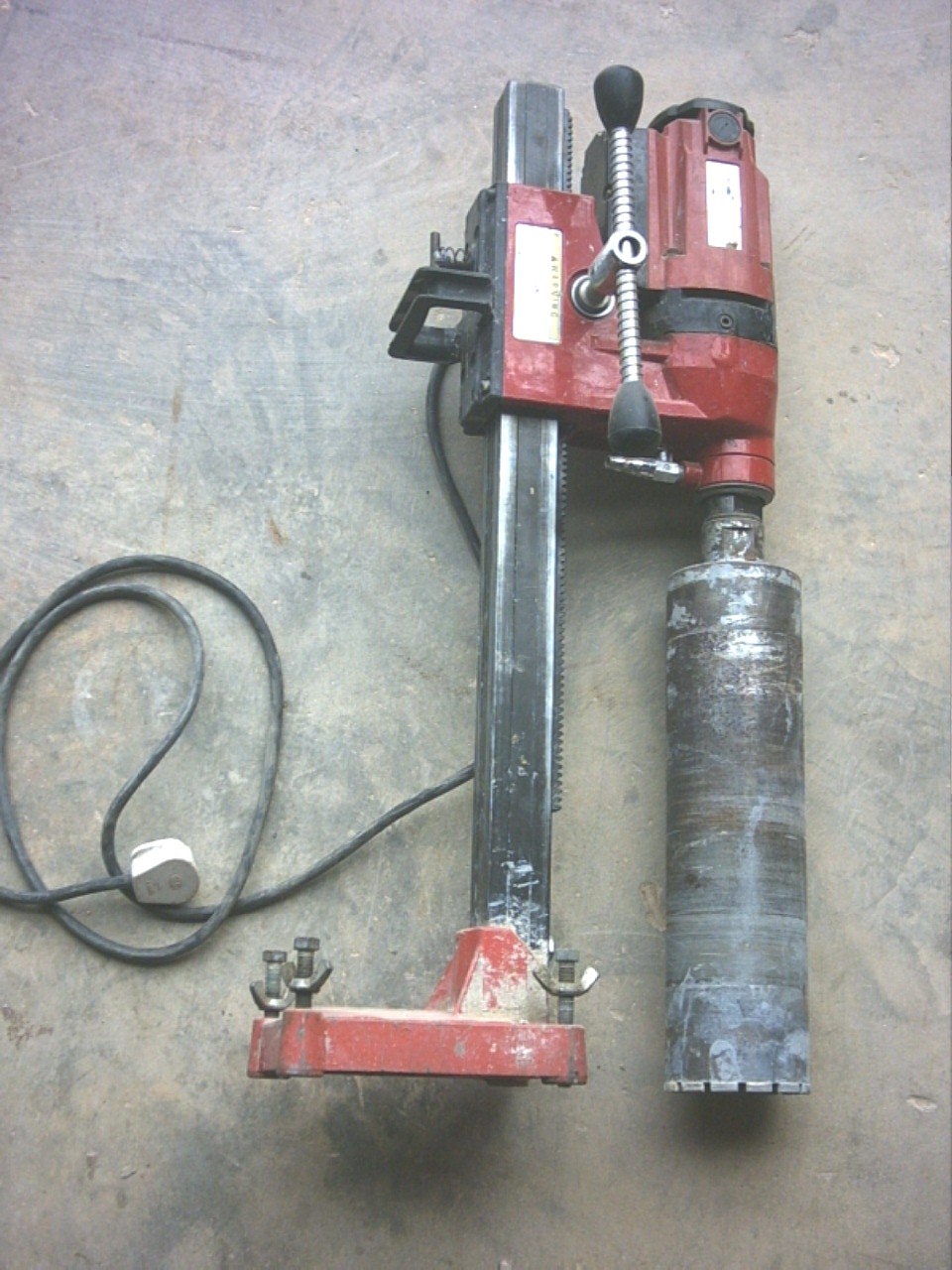STS
TRANSLAB
(Co.No.10791147-A) in association with
SOILPRO TECHNICAL SERVICES SDN BHD (Co.No. 380315-T)
16 Jalan TIB-1/17, Taman Industri Bolton, 68100 Batu Caves, Selangor D.E.
E-mail: soilpro@tm.net.my Tel: 03-61886975, 61889964 Fax: 03-61855903
1.
Compaction Related
Test
- In-situ
density sand replacement (small cone)
Method - BS1377: Part 9, 1990, 2.1,
This is the most widely used method for determining the in-situ density of earthworks layers by direct measurements of mass and volume. The method is applicable for natural or compacted fine to medium grained soil layers up to 150mm thick.
As a compaction control, the test is normally required with laboratory compaction test (2.5 kg or 4.5 kg rammer) to determine the degree of site compaction relative to laboratory maximum dry density and optimum moisture content. The laboratory test that is charged separately and can be carried out at the Laboratory's permanent facility (as above address) is as follows:
BS1377: Part 4, 1990, 3.3 (2.5k rammer) or/and BS1377: Part 4, 1990, 3.5 (4.5k rammer)
Test
- In-situ
density sand replacement (large cone)
Method
- BS1377:
Part 9, 1990, 2.2
This is the most widely used method for determining the in-situ density of backfill layers (eg. granular sub base- crusher run) by direct measurements of mass and volume. The method is applicable for natural or compacted fine to coarse-grained soil layers exceeding150mm, but not exceeding 250mm in thickness.
As a compaction control, the test is normally required with laboratory compaction test (2.5 kg or 4.5 kg rammer) to determine the degree of site compaction relative to laboratory maximum dry density and optimum moisture content. The laboratory test that is charged separately and can be carried out at the Laboratory's permanent facility (as above address) is as follows:
BS1377: Part 4, 1990, 3.4 (2.5k rammer) or/and BS1377: Part 4, 1990, 3.6 (4.5k rammer)
Test
- In-situ
density core cutter
Method
- BS1377:
Part 9, 1990, 2.4
This method may be less accurate than the sand replacement method test. It is used if speed is essential and the soil is sufficiently soft and well compacted for the cutter to be driven easily. As a compaction control, the test is normally required with laboratory compaction test (2.5 kg or 4.5 kg rammer) to determine the degree of site compaction relative to laboratory maximum dry density and optimum moisture content.
The laboratory test is charged separately.
BS1377: Part 4, 1990, 3.3 (2.5k rammer) or/and BS1377: Part 4, 1990, 3.5 (4.5k rammer)
Pavement Related
Test
- Insitu
CBR
Method
- BS1377:
This method is is used to check the quality of sub grade and to determine the strength of granular sub-base (crusher run) during road construction. The test primarily involves shear deformation of the soil beneath a standard 50mm dia. plunger.
*
Testing Rate is not inclusive of
reaction load. The cost of providing the reaction load shall be borne by
the client. For investigation on existing roads, traffic management cost
and stipulated working time may have to be considered.
Test
- Pavement
Coring (dia.100
or dia.150)
mm
This method is used to check the thickness of pavement and the defined layers such as overlay, wearing course, binder course or even Macadam course (old road).
For investigation on existing roads, traffic management cost and stipulated working time may have to be considered.
Test
- Dynamic
Cone Penetration (DCP)
Method - Ref: TRRL & TRL Ltd., U.K.
This method is used for rapid measurement of the structural properties of existing road pavements with unbound granular materials. The rate of penetration of the cone, when driven by a standard force is inversely related to the CBR test. Where the pavement and sub-grade layers have different strengths, the boundaries between the layers and the thickness of layers can be estimated.
For investigation on existing roads, traffic management cost and stipulated working time may have to be considered.
3.
Concrete
Related
Drilling
- Concrete Coring
(dia.100
mm up to max. 300mm length)
This method is carried out when standard cube strengths are low. But first ensure that:
-
the concrete strengths actually failed to meet the specification provisions,
-
low strengths are verified and compared with rebound hammer tests from areas of both questionable and good cube strength results, and
-
the specified strength is really needed. In many cases, the concrete can be accepted for the intended use.
Test - Compressive Strength (cylindrical), dia.100mm
Method - BS1881: Part 120, 1983
Equipment
- Wykeham Farrance, 2000 kN, S/No.12177-1 with Digicon digital readout
unit S/No.95828-0
Available at the Laboratory's permanent facility (as above address). This method is used to determine the strength of concrete cores.
"The results of the test are given as the measured core strength or the in-situ cube strength which are without allowance for the effect of curing history, or age, or degree of compaction. The relationship between core and cube strengths is complex and will vary with particular conditions", (BS1881: Part 120, 1983- Forward)
Test specimens to be delivered to the Laboratory- refer to NOTE 4
Test
- Compressive
Strength (cube)
Method - BS1881: Part 116, 1983
Equipment - Wykeham Farrance, 2000 kN, S/No.12177-1 with Digicon digital readout unit S/No.95828-0
Available at the Laboratory's permanent facility (as above address).
Test specimens to be delivered to the Laboratory- refer to NOTE 4
The readout unit has a built-in autorange system whereby the lower range is displayed in 0.1 kN divisions up to 500 kN and on reaching this figure automatically changes to 1.0 kN divisions up to the maximum capacity.
Test - Schmidt Rebound Hammer,
Method - BS1881: Part 202 - Concrete Test Hammer guide
Hammer
Type - Proceq N-34, Serial No:123883![]()
This method is used for the non-destructive measurement of the concrete/mortar compressive strength and the control of the uniform concrete quality (in-situ concrete and prefabricated structures) as well as for detecting weak spots. The compressive strength (fc) is established by measuring the hardness (rebound value R) of the concrete surface and with the conversion curves.
- Download the file "quote.pdf" to select your testing requirements for a quotation.
- Authorized work or purchase orders are required before commencement of work.
- The rates for tests to be carried out at the Laboratory in Batu Caves do not include costs incurred for obtaining test specimens and site sampling rates are quoted separately.
- There is no provision for collection of test specimens sampled or prepared by clients or others.
- Two (2) copies of test results shall be sent to one address. The rates do not include provision for collation and tabulation of test results in a summary format whether hardcopy or digital (i.e. AGS format). The provision for specific photographic requirements shall be quoted separately otherwise it shall be on a need to or limited basis.
- Test specimens or samples delivered to the Laboratory are disposed of one (1) month after the issue of the results or report unless otherwise instructed. If instructed storage time exceeds two (2) months, clients shall collect the items and find alternative storage at their on expense.



